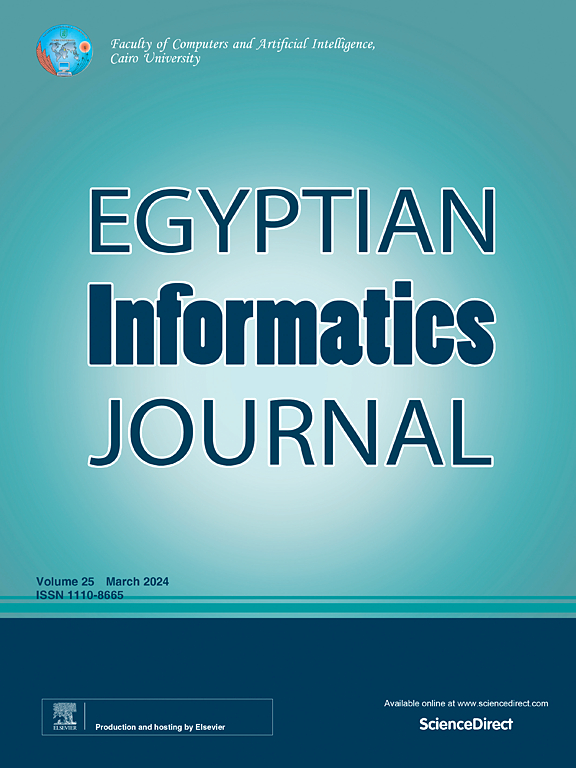可靠的生成可解释框架,用于有效的空气质量指数预测分析
IF 4.3
3区 计算机科学
Q1 COMPUTER SCIENCE, ARTIFICIAL INTELLIGENCE
引用次数: 0
摘要
空气质量管理是工业5.0时代最重要的可持续发展目标之一。尽管环保爱好者和研究人员做出了巨大的努力,但空气污染的严重程度和剧烈污染物的影响却日益增加。人工智能(AI)在确定空气质量指数(AQI)方面的作用是重要的,分类达到了合理的准确性。提出的模型是一个多类问题,它将空气质量指数分为六个不同的类。各种ML模型,如决策树(DT)、随机森林(RF)、自适应增强(AdaBoost)、梯度增强(GB)、逻辑回归(LR)。RF为AQI类别预测提供了可靠的性能指标,准确度和精密度达到0.99。该模型用于实现可解释的AI (XAI)模型,例如使用局部替代图进行解释的局部可解释模型激动解释器(LIME)和使用全局替代图进行解释的SHapley可加解释器(SHAP)解释器。生成对抗网络(GAN)可以生成合成数据,解决数据缺失、类不平衡、噪声和冗余数据等关键问题。GAN在AQI数据的分类中表现出最优的性能,准确率接近100%。这主要是由于GAN生成的合成数据增强了分类性能。提出的工作集成了GAN-AI-XAI的成果,增强了AQI分类模型的性能、可靠性、可信度和鲁棒性。本文章由计算机程序翻译,如有差异,请以英文原文为准。
Reliable generative interpretable framework for efficient predictive analysis of air quality index
Air quality management is one of the most important sustainability goals in the era of Industry 5.0. The magnitude of air pollution and impact of drastic pollutants increase day by day despite the significant efforts of the environmental enthusiasts and researchers. The role of Artificial Intelligence (AI) in determining the Air Quality Index (AQI) is significant with reasonable accuracy of classification achieved. The proposed model is a multi-class problem, that classifies the AQI into six different classes. Various ML models such as Decision Tree (DT), Random Forest (RF), Adaptive Boosting (AdaBoost), Gradient Boosting(GB), Logistic Regression (LR). The RF provided reliable performance metrics for AQI category prediction, achieving an accuracy and Precision of 0.99. This model is selected for the implementation of Explainable AI (XAI) models such as Local Interpretable Model Agonistic Explainer (LIME) for explanation using the local surrogacy plots and SHapley Additive exPlanations (SHAP) explainer for the global surrogacy plots. The Generative Adversarial Network (GAN) can generate synthetic data, which addresses critical issues such as missing data, class imbalance, noise, and redundant data. The performance the GAN shows optimized performance in classification of the AQI data with accuracy closer to 100 %. This is mainly due to the synthetic data generated by the GAN which enhances the performance of the classification. The proposed work integrates the efforts of the GAN-AI-XAI that enhances the performance, reliability, trustworthiness and robustness of the AQI classification model.
求助全文
通过发布文献求助,成功后即可免费获取论文全文。
去求助
来源期刊

Egyptian Informatics Journal
Decision Sciences-Management Science and Operations Research
CiteScore
11.10
自引率
1.90%
发文量
59
审稿时长
110 days
期刊介绍:
The Egyptian Informatics Journal is published by the Faculty of Computers and Artificial Intelligence, Cairo University. This Journal provides a forum for the state-of-the-art research and development in the fields of computing, including computer sciences, information technologies, information systems, operations research and decision support. Innovative and not-previously-published work in subjects covered by the Journal is encouraged to be submitted, whether from academic, research or commercial sources.
 求助内容:
求助内容: 应助结果提醒方式:
应助结果提醒方式:


